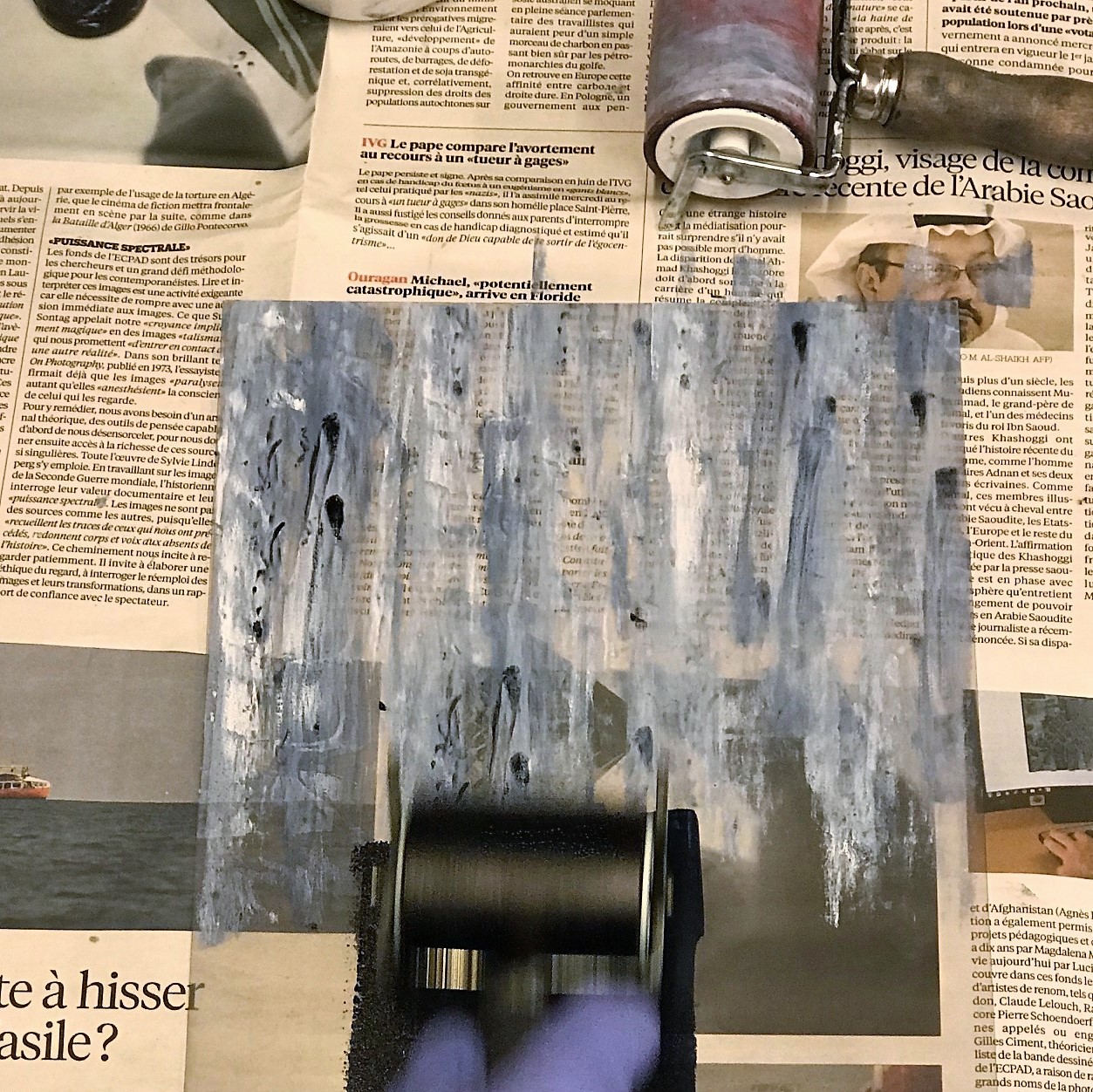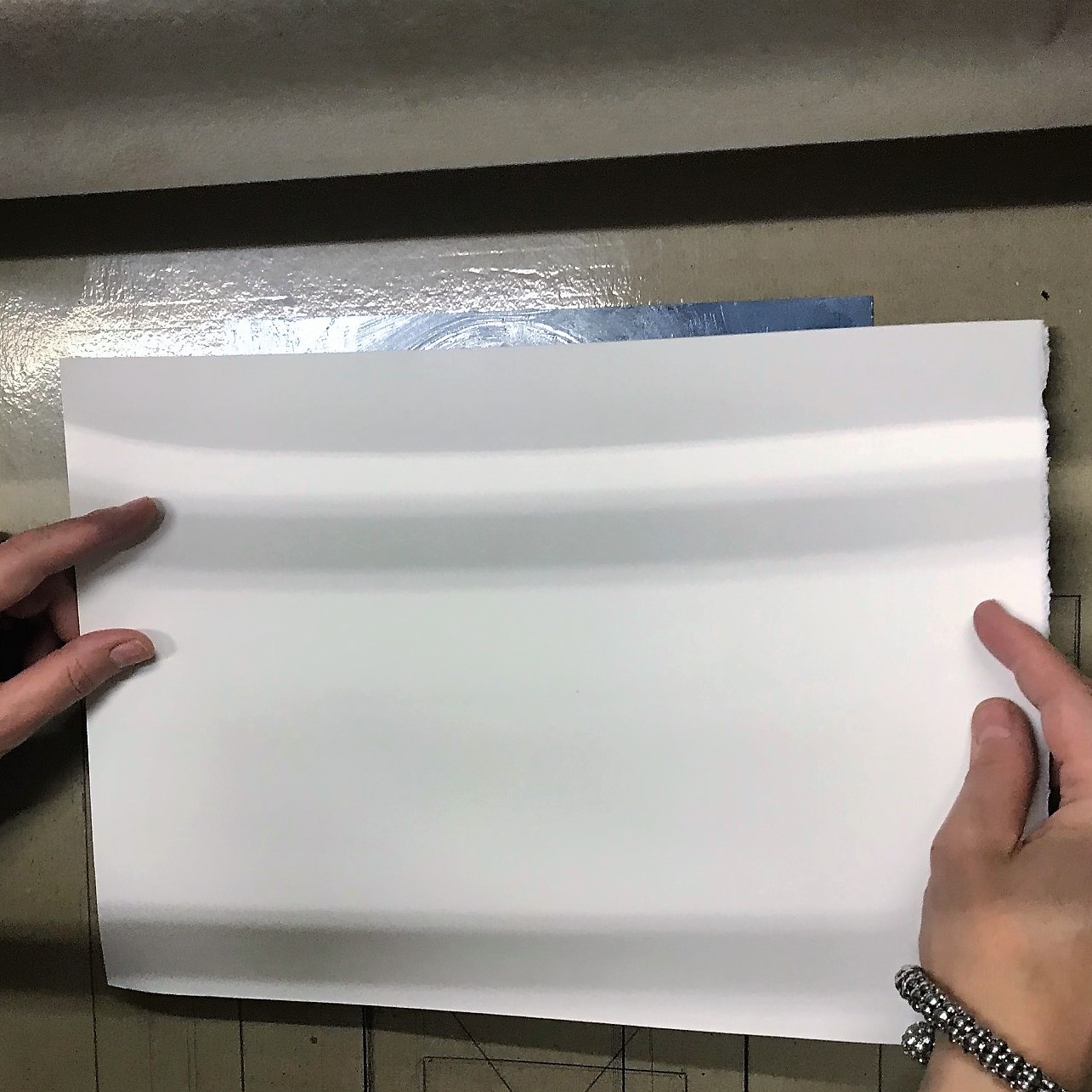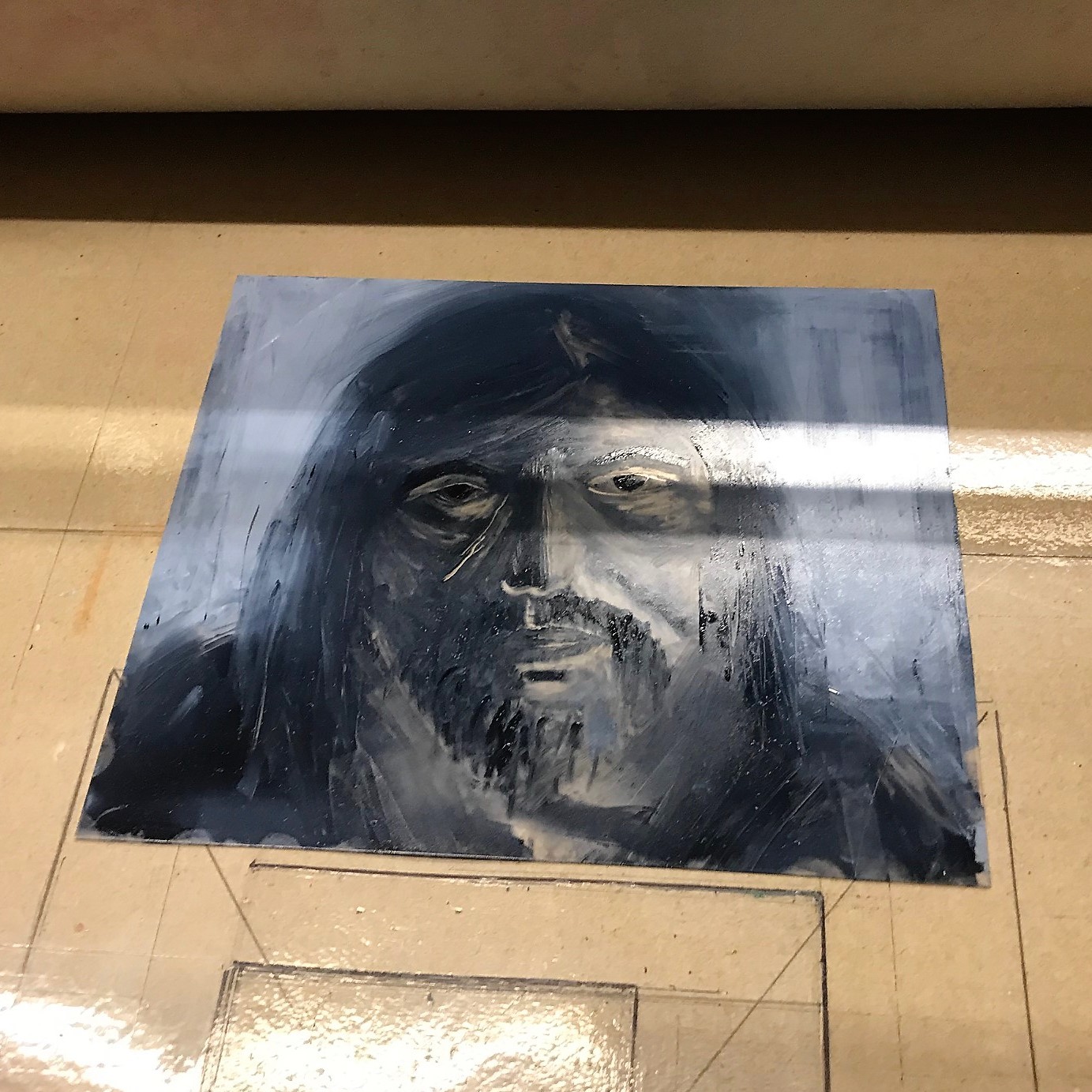The monotype
The monotype is associated with the engraving even if it does not fit properly. speak in engraving processes. This technique consists in obtaining a separately printed printir of an image drawn on a plate. The copy obtained is unique.
The monotype was developed by Giovanni Benedetto Castiglione during the 17th century. The artist created many religious monotypes by transferring ink from a flat surface to paper. In France, one of the masters of the monotype is Edgar Degas, who practised it notably from 1875 to 1885. Inspired by the spontaneous nature of the process, Degas changed his technique from one monotype to the next, sometimes using Indian ink directly on the plate, sometimes diluted oil paint. Henri Matisse and Paul Gauguin also produced numerous monotypes.
Today, artists couple the monotype to other techniques, in particular by using digital and photography.

Drawing inks are mixed with a drying retarder and spread out on a board. The matrix of the drawing is fixed to a support, then transparencies are superimposed and fixed to their turn on the matrix. A thin layer of ink is rolled onto the upper transparency and then wiped off. and set aside. Then the second and then the third transparency are inked in turn, in drawing the image to be printed.

Ink is wiped off in such a way as to leave blank or colored areas of the previous layers. The last transparency is inked for printing. The first transparency is placed on the press and then covered with a layer of paper. The press cylinder comes to print the first colour.

After removing the first transparency, the printed image is placed on the press and then y is added the second overlay. The second image is overprinted on the first. On repeats the process with the third transparency. The last transparency is removed to reveal the final print: the engraver obtains his monotype.




